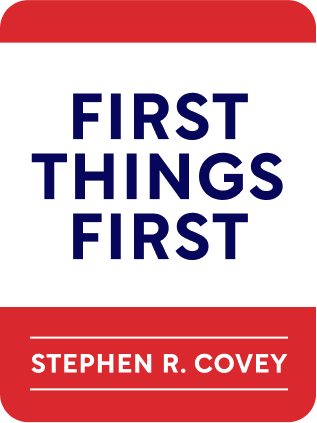

This article is an excerpt from the Shortform book guide to "First Things First" by Stephen R. Covey. Shortform has the world's best summaries and analyses of books you should be reading.
Like this article? Sign up for a free trial here .
What does Stephen Covey say about roles in the context of time management? How do you draw a line between the different roles in your life?
According to Stephen Covey, the roles you inhabit in your professional life are not in opposition to the roles you inhabit in your personal and social life; they overlap. It’s more important to figure out how to balance them.
Keep reading to learn how to foster balance between your roles, according to Stephen Covey.
Stephen Covey: Roles and the Either/Or Paradigm
Most people’s biggest source of dissatisfaction and unhappiness in life is the imbalance they feel between their different roles and responsibilities. Many people feel their work demands so much of them that there aren’t enough hours in the day to give adequate time, energy, and attention to their family. Or they’re just barely keeping up with family and work, but have no personal time for their own rest and rejuvenation, so they feel burnt out.
This feeling of being constantly pulled in different directions stems from the paradigm that balance is about either/or: You either devote the next hour to work or to family, but not to both. The either/or paradigm is largely part of Western culture and contributes to a scarcity, win/lose “chronos” mentality that there is only limited time and time spent in one role is always at the expense of another.
According to Stephen Covey, the roles you inhabit in your personal life shouldn’t be in opposition to the roles you inhabit in your professional life. After all, the person who goes to work and brainstorms in meetings is the same person who cooks dinner at home and helps the kids with homework. Furthermore, all your roles are part of your interrelated whole person, so who you are in each role impacts who you are in all your other roles.
To find balance among your roles in life, you have to stop thinking “either/or” and start thinking “and.” Don’t compartmentalize your roles and the time you devote to each of them, but find an equilibrium where you can address multiple needs at once.
Paradigms that Foster Balance Among Your Roles According to Stephen Covey
You know by now that paradigms are at the root of your actions, so naturally, your paradigms will determine how well you balance your distinct roles. There are three paradigm shifts that can help you better understand the nature of your roles in a way that fosters synergy and balance among them.
Paradigm 1: Your Roles Grow Organically Out of Your Mission
You can choose which roles you inhabit.
According to Stephen Covey, roles should grow out organically out of your personal mission. If they don’t, the roles you inhabit are less likely a result of how you feel about yourself and more likely a result of the social mirror — others’ expectations and opinions about you. You may be taking on roles that you feel you should have, instead of roles that truly reflect your individual goals, values, and purpose.
Think of it like a tree: True north principles are the roots, your mission and fulfillment of your human needs (physical, social, mental, and spiritual) are the trunk, and your roles are the branches, the outgrowth of those foundations. The roles you inhabit become the channels that allow you to fulfill your human needs. A strong connection with your vision fosters energy and passion in each of your roles; if your roots and trunk are healthy, your branches will be strong and flourish.
For example, parents who see their responsibility to raise, nurture, and develop their children as members of future generations are energized by that passion and purpose; these parents’ sense of legacy empowers them to overcome their conditioning and deliberately choose the values and lessons they want to impart on their children.
Balance is Large Scale and Long Term
In the natural ebb and flow of life, balance among your roles won’t look the same from week to week; sometimes you need short-term imbalance to create long-term balance.
For example, parents of a new baby should expect to be consumed with caring for that baby for a while, and spending little or no time in certain other roles (e.g. work). In other cases, caring for an aging parent, getting a new business off the ground, or working on an intensive project may also require a disproportionate amount of time and energy for a limited period of time. You must look at the greater context of life in the long term to see the necessity of these seasonal imbalances. During these periods, it also helps to involve the people who will be affected by this shift in figuring out how to handle the imbalance.
When you’re writing your roles and goals for each week, take into consideration the changing needs and demands of each role. There will be some weeks when you don’t need to set any goals for certain roles.
Be aware of when you need to choose to have a short-term imbalance, but also be cautious to keep it in check with your mission so that you don’t slip into an urgency-driven paradigm. This requires constant check-ins with your conscience and your personal mission statement to make sure you’re still in line with your long-term goals and long-term balance.
Paradigm 2: Your Roles Serve a Greater Purpose
According to Stephen Covey, your roles are naturally interdependent with other people in your life. Returning to the tree metaphor, think of how each individual tree is part of a larger ecosystem: The tree’s health is influenced by its environment and also impacts the well-being of the other living beings around it. Similarly, you are a part of your larger ecosystem, and the way you carry out each of your roles impacts the people around you, society, or future generations.You’re a steward of your time, energy, and capabilities, and each of your roles is a stewardship.
Understanding this interdependence creates a sense of accountability — you’re responsible for how your life impacts others. Your unique human endowments of self-awareness, conscience, creative imagination, and independent will give you the power to choose how you want to impact the world through your life and your roles.
Paradigm 3: Every Role Addresses All Four Human Needs and Capacities
Every role you have has a physical, social, mental, and spiritual dimension. With a focus on nurturing balance, let’s take a closer look at the social and mental dimensions.
In the social realm, every role you have either deals with or affects other people. Even if your job is performed in isolation, the work you do impacts other people. Recognizing the social dimension of each of your roles helps you to prioritize people above tasks and schedules. For example, an executive who understands the social dimension of her job won’t view an employee’s question or request for a meeting as an interruption that impedes her from attending to her busy schedule, but rather as an opportunity to empower, mentor, and build a relationship with a member of her team.
Each role also has a mental dimension that calls for your continued learning, growth, skill development, and increased understanding. This is even true in your role as a spouse: Your marriage will be stronger if you make the effort to continue learning about the other person and about ways to show love and foster a healthy relationship.
The Quadrant II Organizing Process Creates Balance
The Quadrant II organizing process is designed to nurture and maintain balance.
First, the practice of reviewing your mission statement before you begin your weekly planning keeps you connected with your vision, passion, and principles. Since your mission statement addresses all four of your human needs, reviewing it raises your ability to create inner balance.
Second, through reviewing your roles each week, you’re able to see them as the avenues through which you can achieve your mission. You’re reminded of each role’s physical, social, mental, and spiritual dimensions and can create balance and synergy among them.
Organize Notes and Information by Roles
In addition to the practices that are built into the Quadrant II organizing process, you can further nurture balance by organizing notes and information according to your roles.
Create separate sections in your planner or organizer for each role. Then, when you have information or notes pertaining to a specific role, file it in that section.
For example, if you get a price estimate on flooring for a home improvement project, file it in the role that includes household management. Or if you think of an idea for a new product at work, file it in the section dedicated to your work or product development role.
You can also file phone numbers and addresses according to each role — for anything from friends (personal role), colleagues (work role), or carpet cleaning services (home management role).
This style of organization plays to your natural mental associations and makes it easier to organize and find information. This strategy also reinforces balance and a Quadrant II emphasis on importance because you can easily see what’s important within each role, rather than throwing everything into the same pile where the urgent will naturally grab your attention.
Set up your filing drawer or computer folders to also reflect these roles; when you no longer need information readily accessible in your planner, transfer it over to this filing system. It will still be organized by role, but won’t be a distraction in your organizer for daily and weekly planning.
Set Expectations for Each Role
Another way to maintain balance and organization is to clearly define each of your roles and the responsibilities you have within them. Many people find it helpful to do this in the form of a mission statement or stewardship agreement that’s separate from what they’ve outlined in their general personal mission statement.
As you define each role, clarify the shared expectations that you and the other people involved have for each other in fulfilling that role. For example, in your role as a spouse, talk with your partner about each of your expectations of each other in your marriage. In your role as an employee, talk to your boss about your role in the company.
Stephen Covey: Roles, Goals, and Balance
Finding balance in your roles is key to creating synergy and creating quality of life. Use these techniques to foster balance among your roles.
- Review your personal mission statement and your listed roles. Evaluate whether your roles grow naturally out of your mission. Does your mission incorporate all the important roles in your life? If not, reassess and revise your roles.
- Reflect on the relationships that are part of each role and to whom you’re accountable in each role.
- Create sections (or some form of organization) dedicated to each role in your planner. Do the same in your paper or digital filing system.
- Define your responsibilities and shared expectations for each role in mission statements or stewardship agreements.

———End of Preview———
Like what you just read? Read the rest of the world's best book summary and analysis of Stephen R. Covey's "First Things First" at Shortform .
Here's what you'll find in our full First Things First summary :
- How to work effectively, not just efficiently
- Why you need to think more about what you're spending time on than how much time you're spending
- The 6 steps to effectively schedule and prioritize important activities






